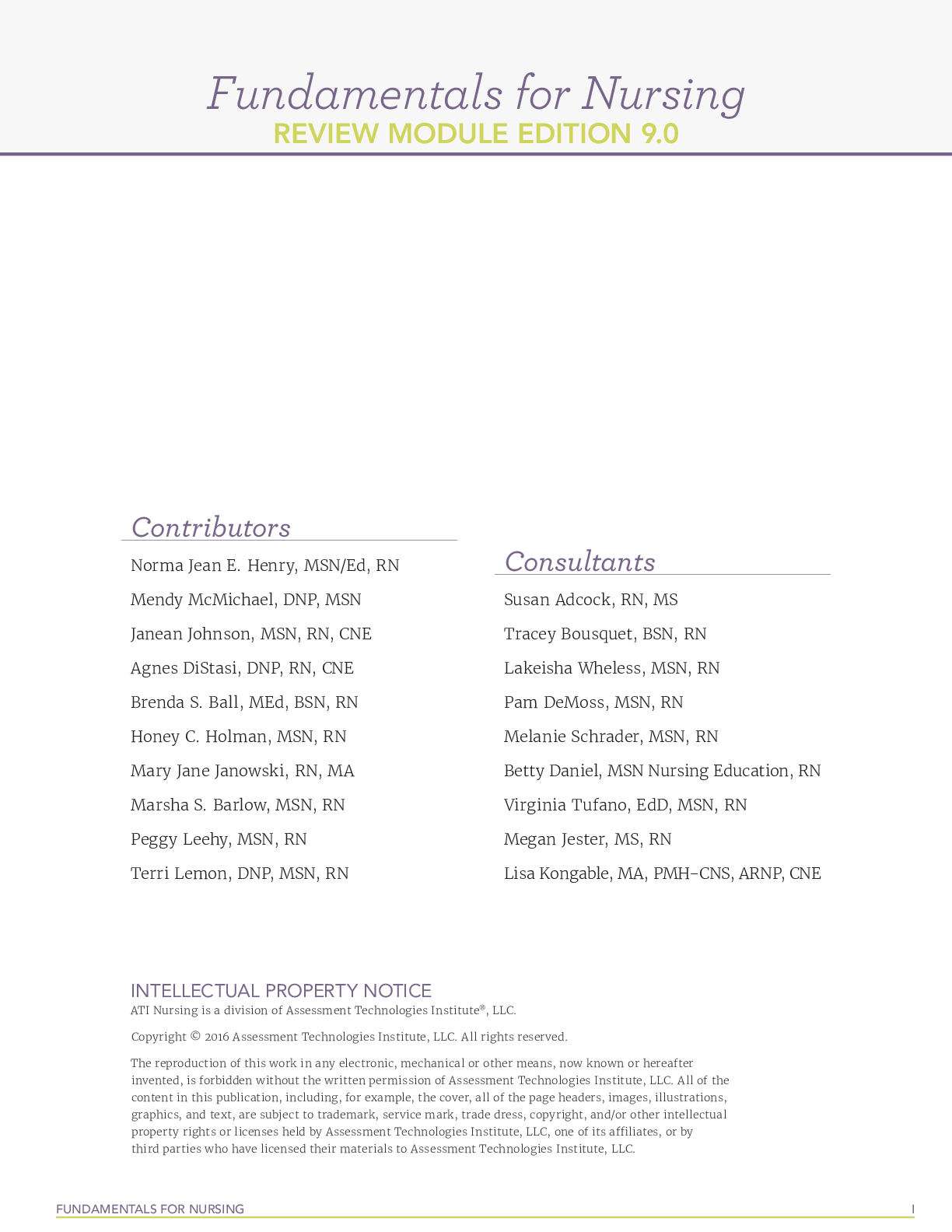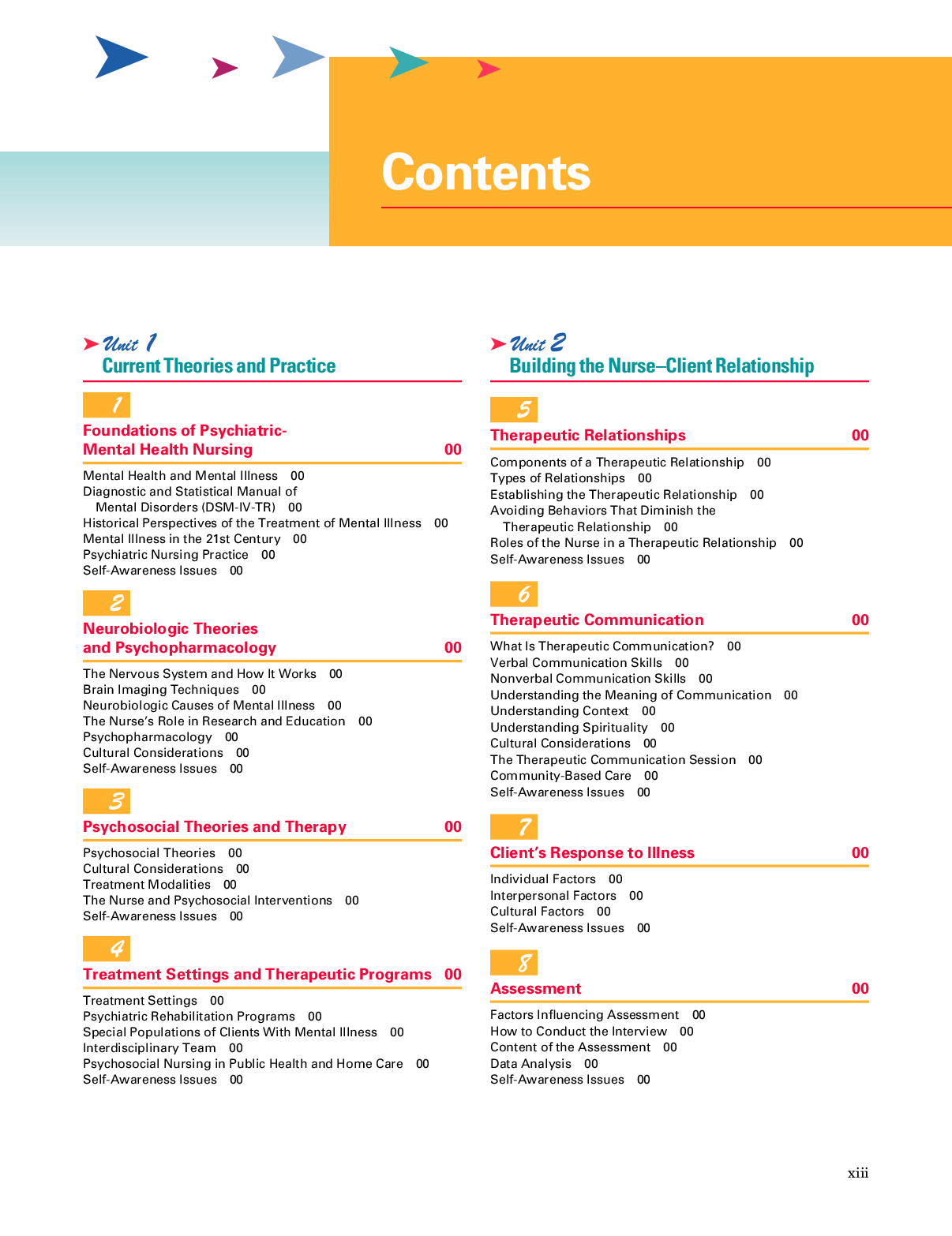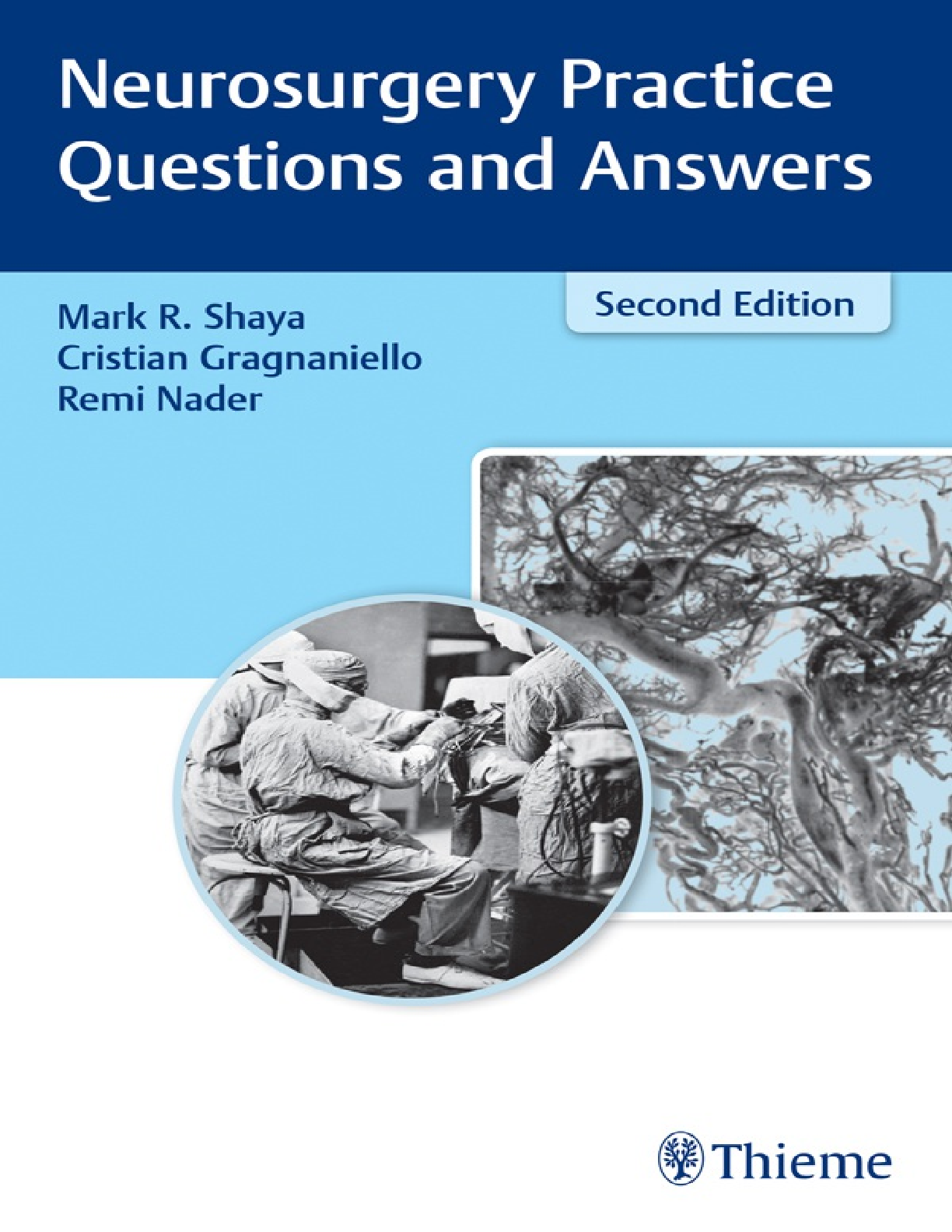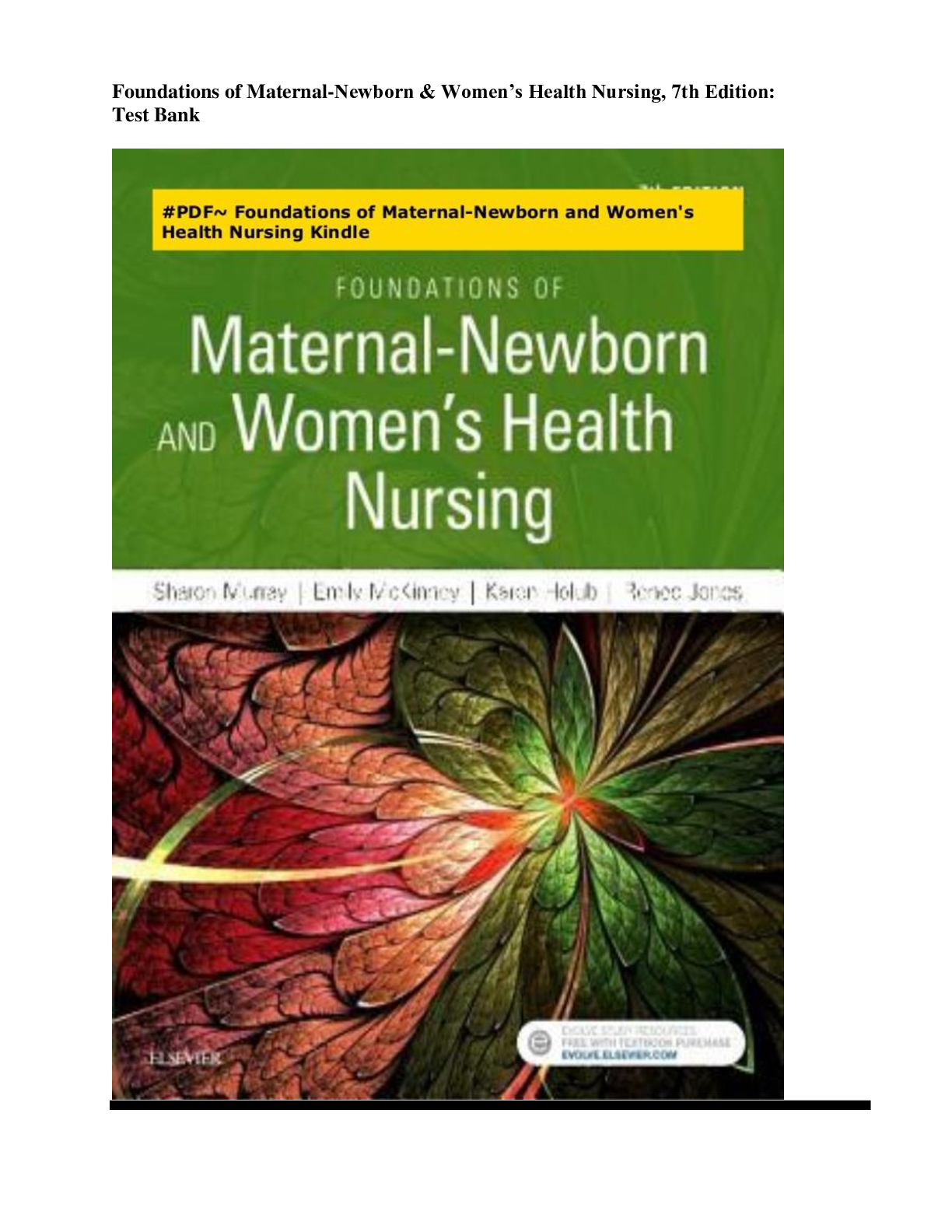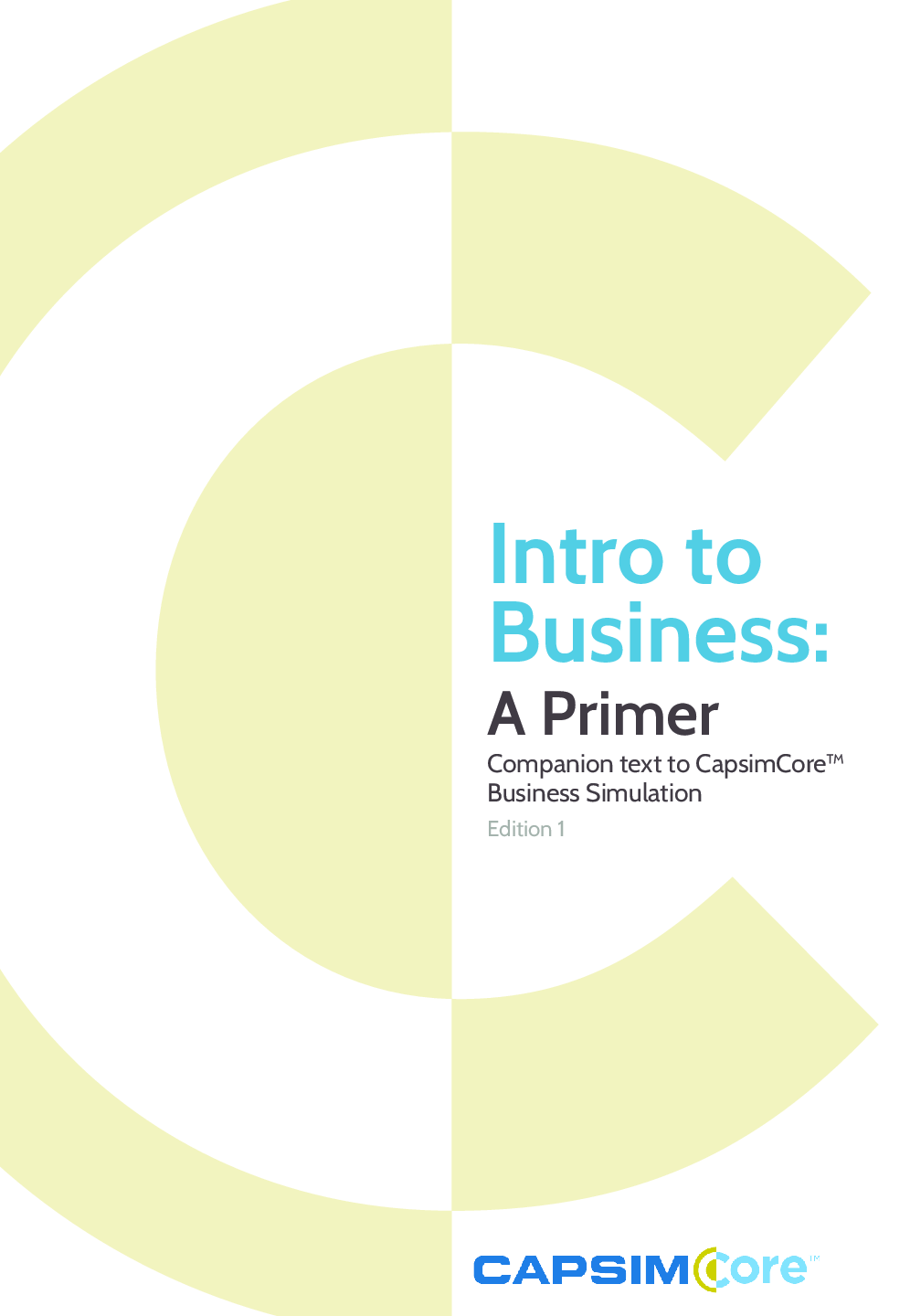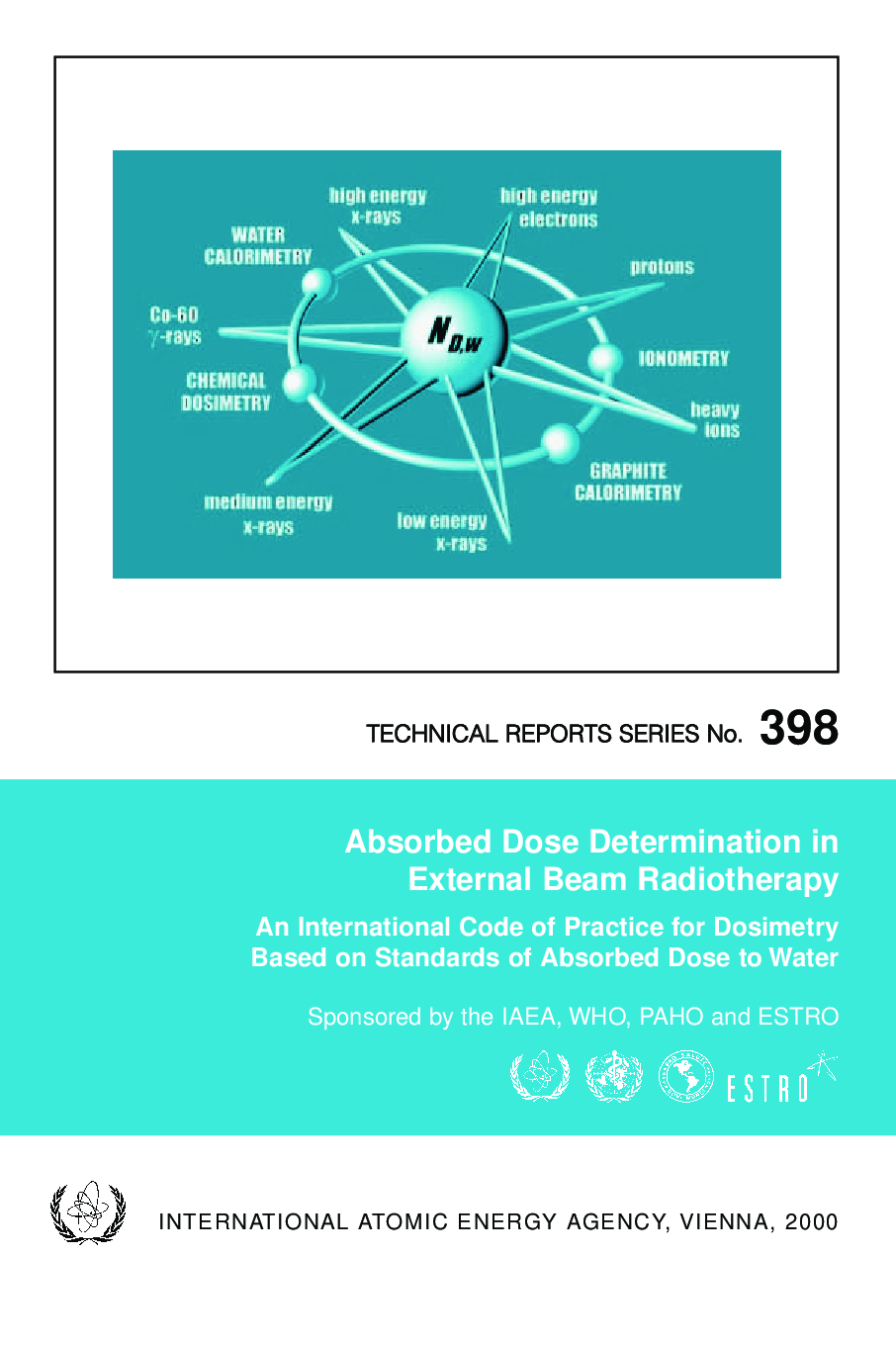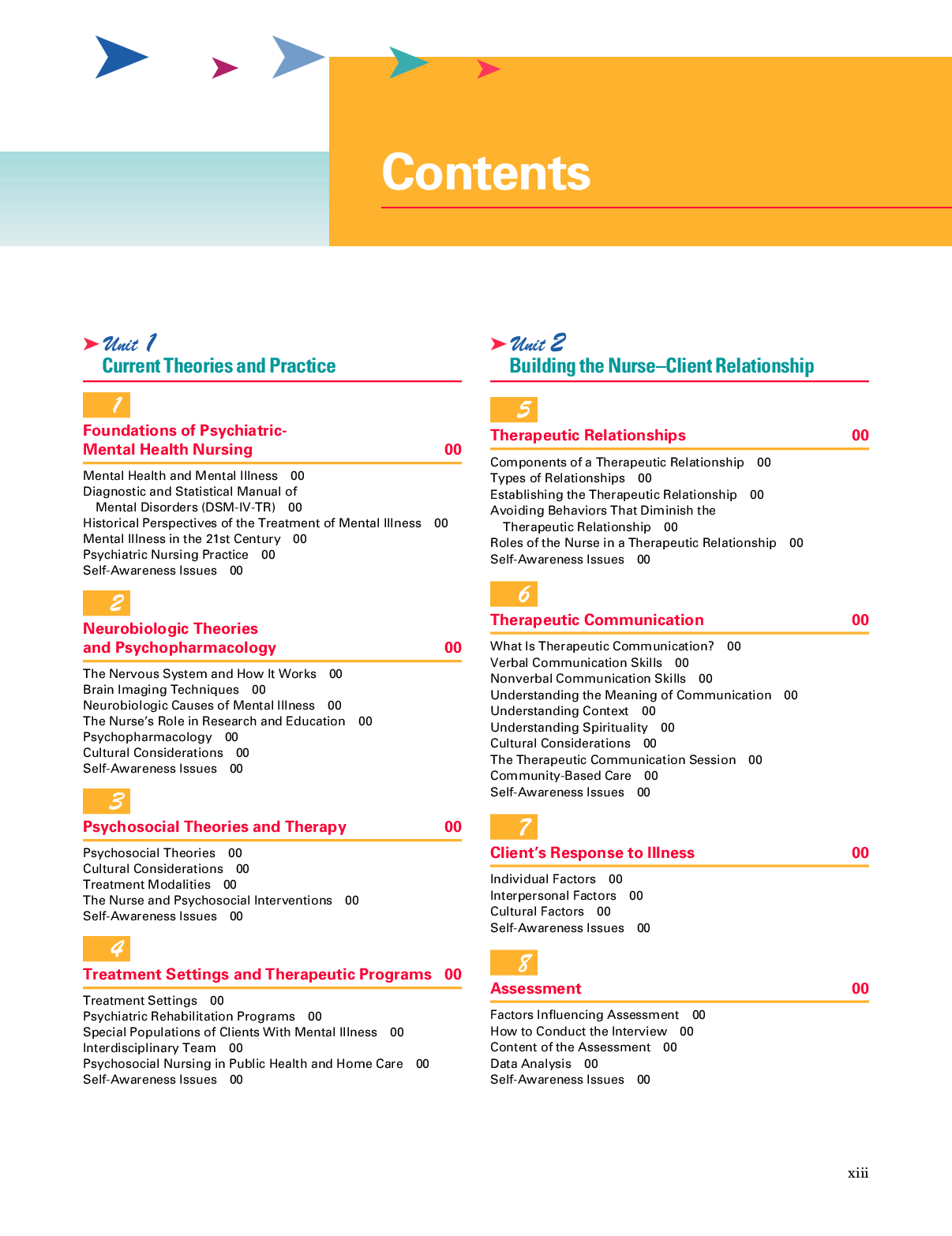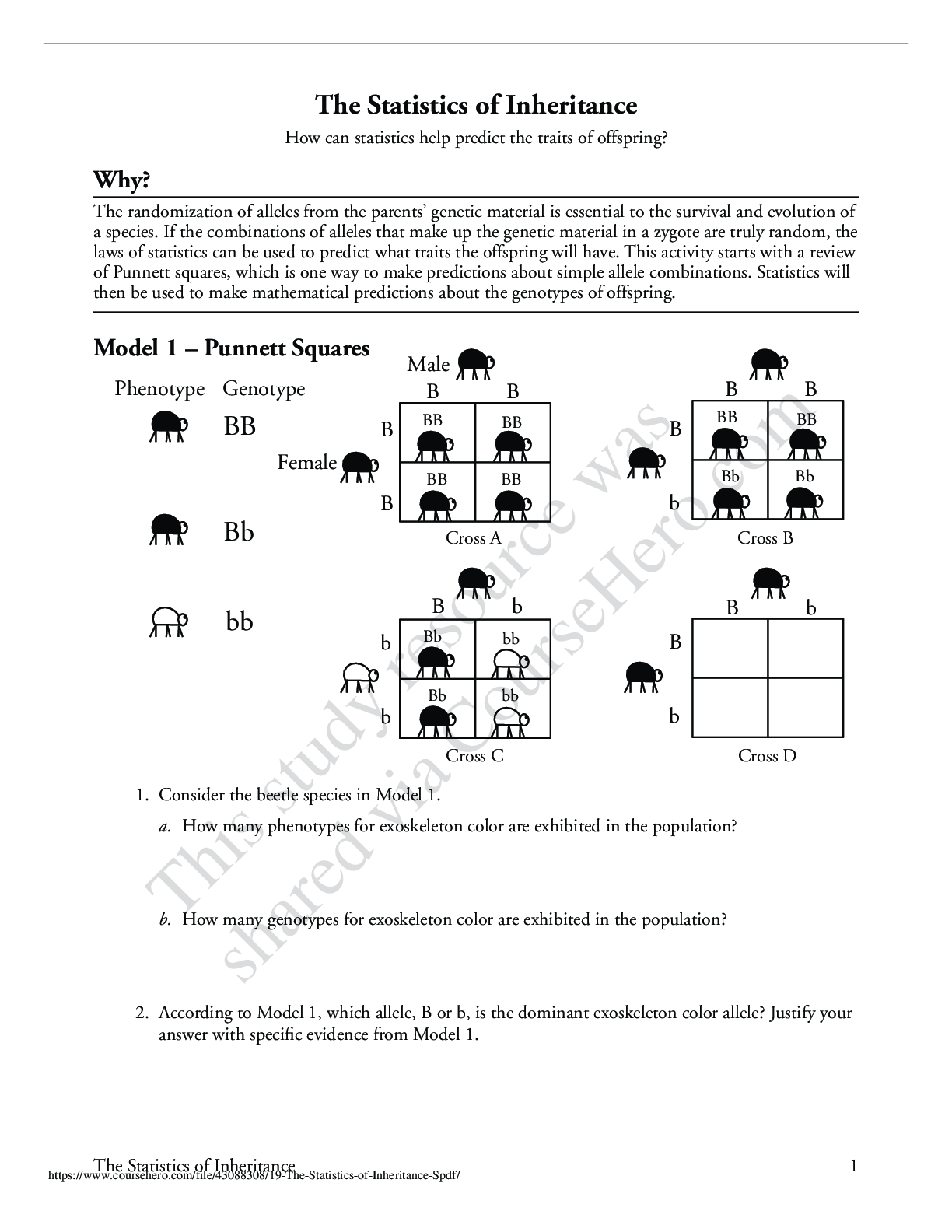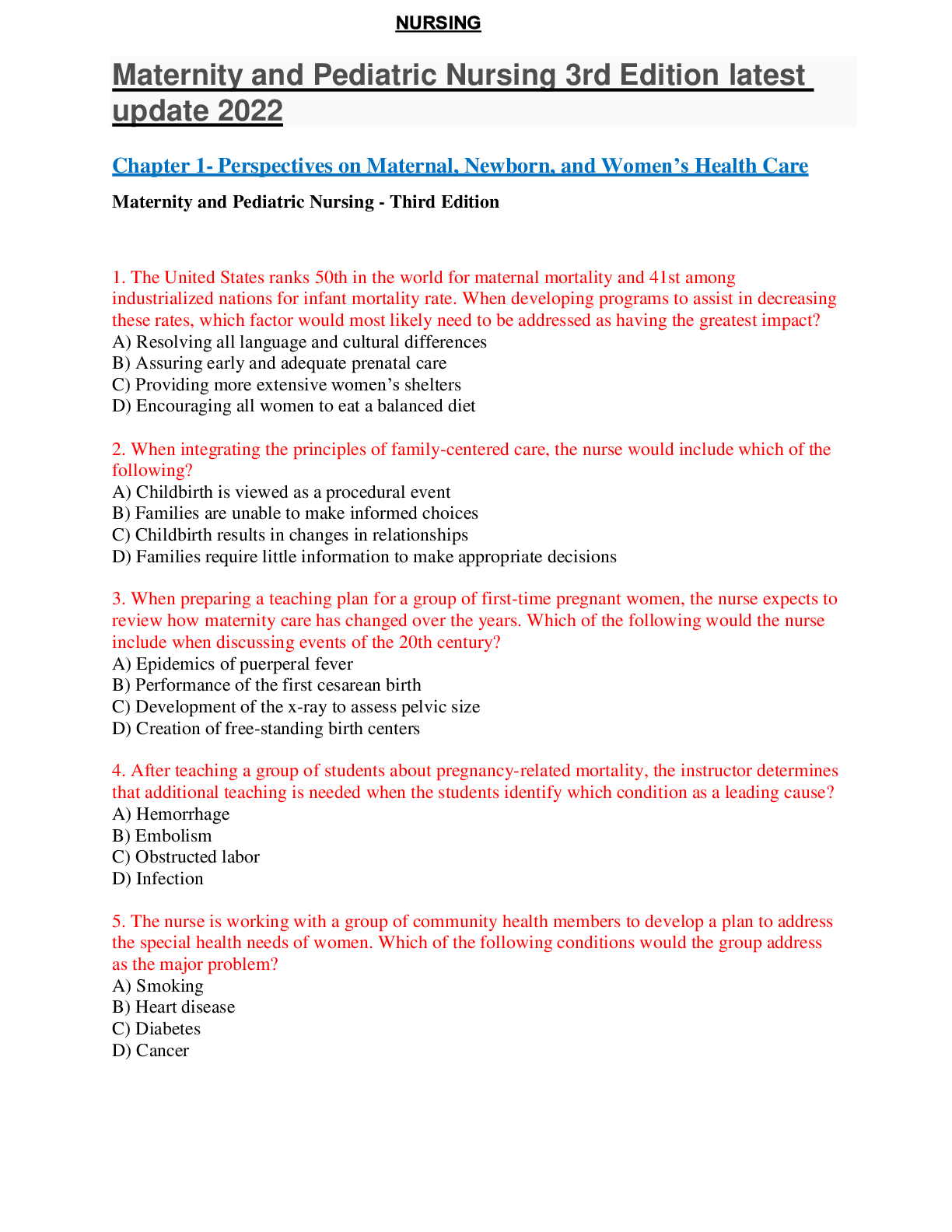Pathophysiology > Text Book Notes > Alterations in Cognitive Systems, Cerebral Hemodynamics, and Motor Function: Reviewed Study Notes fo (All)
Alterations in Cognitive Systems, Cerebral Hemodynamics, and Motor Function: Reviewed Study Notes for Pathophysiology (PATHO NR282) and Nursing
Document Content and Description Below
Physical injuries and aging can damage neurons. Functional competence involves three neural systems: • cognitive systems How do we know our patient has a neural deficit? Alterations in conscio... usness: Consciousness is the full awareness of self, location, and time in any environment. Clinical Manifestation of CNS dysfunction/injury: vomit, double vision, dizziness, drowsiness, restlessness Alteration in Arousal CAUSES= Metabolic- Hypoxia, electrolyte imbalance, hypoglycemia (drowsy and disoriented), drugs (narcotic and sedative drugs) extracerebral (outside cerebrum) - disorders include: infratentorial (below tentorium) (cerebellum is below tentorium Clinical manifestations and evaluations - must distinguish between organic Levels of consciousness Rostral-caudal progression – (do not need for this class) Alterations light coma -associated with purposeful movement on stimulation (responds to pinching or so. She will pull arm away) COMA bilateral hemisphere damage or suppression Pattern of Breathing - Respiratory center in pons medulla. (picture of brain injury and specific breathing pattern associated with that injury) Pulpillary changes - (window to the brain) brain stem areas controlling arousal are adjacent to areas controlling pupils; therefore, pupillary Oculomotor responses - resting, spontaneous, and reflexive eye movements undergo change at various levels of brain dysfunction Motor responses – (dragging left foot means right brain injury) motor responses contribute both to evaluating the level of brain Outcomes of neurological manifestations: Cerebral death - irreversible coma - internal homeostatis may be maintained Vegetative states - cerebral function is lost in this state, but sleep-wake cycles are present. The individual maintains Locked-in syndrome - both the content of thought and level of arousal are intact but the efferent pathways are disrupted. Brain death (brain stem death) - destruction of cerebellum and brain stem; can no longer maintain homeostasis (this criteria varies from state to Seizures - a sudden, explosive,transient inappropriate discharge of cerebral neurons, causing alterations in brain function Types of seizures - seizures are classified by: • clinical manifestations Clinical terminology of seizures: • aura - peculiar sensation immediately preceding seizure (anxiety, know something is wrong) Epiloeptogenic focus - a group of neurons that evidence a paroxysmal depolarization shift and sudden changes in the usual membrane potential Alterations in content of thought (cognition) - selective attention refers to the ability to select from available, competing environmental and internal stim sensory inattentiveness - Form of self neglect that is usually in combo with paralysis Dysmnesia - a disorder of the recent memory system defined as the loss of past memories coupled with an inability inability to recall past and present personal • executive attentional network – includes: (executive- frontal lobe- you make decisions) (whoops, disorganized notes Forms of executive attentional disorder may range from- mild - responds to immediate environment but has no new Data processing deficits: FOCUS ON DEFINITIONS • agnosia - a defect of pattern recognition, failure to recognize the form and nature of objects. Loss of comprehension Aphasia is a more severe form of dysphasia (Huether 357) Acute confusional states ACS- transient disorder of awareness that result from cerebral dysfunction Clinical manifestations of acute confusional states include: (FIX THIS MESS, Make individual definitions) Delirium- hyperkinetic (most common/predominantly in ICU) Develops over 2-3 days Dementias – progressive. characterized by reduction in cognitive/cerebralfunctions. There is a decrease in orienting, recent memory, Pathophysiology - mechanisms in dementing processes include: Evaluation and treatment - evaluation is complex; must eliminate outside causes. Treatment is nonspecific Alzheimer's Disease - most common dementia. Characterized by: Pathophysiology of Alzheimer's Disease - Clinical manifestations of Alzheimer’s disease include - Alterations in Cerebral Homeostasis - intracranial pressure is normally 5 Stages of intracranial hypertension include stage 1 - alteration of cerebral blood volume Herniation syndromes - differential pressures cause herniation of brain tissue, producing ischemia and hypoxi infratentorial herniation - most common is a cerebellar tonsil shifts through the foramen magnum causing an Cerebral edema - increased in fluid content of the brain. May be extra or intracellular. Good multiple q Four types of cerebral edema are: Hydrocephalus - refers to a variety of conditions characterized by an excess Types of hydrocephalus include: • noncommunicating (internal) - may result from congenital abnormalities or • Acute hydocephalus- increased fluid production, usually due to injury Types of communicating hydrocep Alterations in emotions and mood –These alterations are governed largely by the limbic system, hypothalamus, and frontal lobes of cerebral cortex. Alterations in motor function - movements are complex patterns of activity controlled by the CNS. Alterations in muscle tone – more multiple choice here flaccidity- no muscle tone at all, usually due to cerebellar damage (almost robotic) resulting in ratchet moves phenomenon, also known as basal ganglia somethingrather Abnormalities in muscle strength - 1 to 4+ (no movement to normal) Degrees of abnormal muscle strength range from: Abnormal movements - CNS dysfunctions alter muscular innervation: Hyperkinesia - excessive movements; include: Hypokinesia - decreased movement despite preserved consciousness and normal peripheral nerve and muscle function. Alterations in complex motor performance - include disorders of posture, gait and expression. Disorders of posture (stance) include: (picture of rigidity again) Disorders of gait - types of gait disorders include: Extrapyramidal motor syndromes - encompasses all the motor pathways except the pyramidal system. [Show More]
Last updated: 1 year ago
Preview 1 out of 20 pages
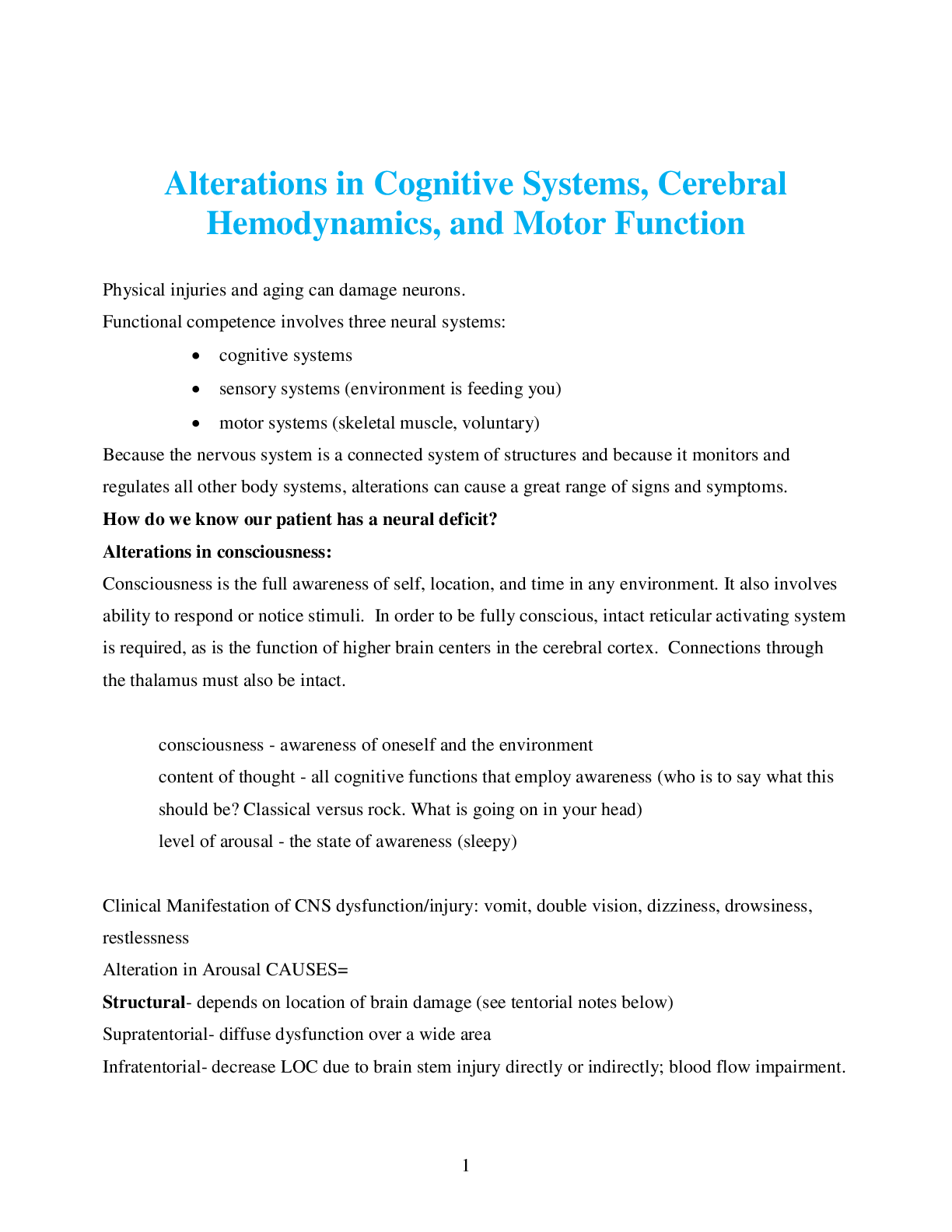
Reviews( 0 )
Document information
Connected school, study & course
About the document
Uploaded On
Mar 22, 2020
Number of pages
20
Written in
Additional information
This document has been written for:
Uploaded
Mar 22, 2020
Downloads
0
Views
69


